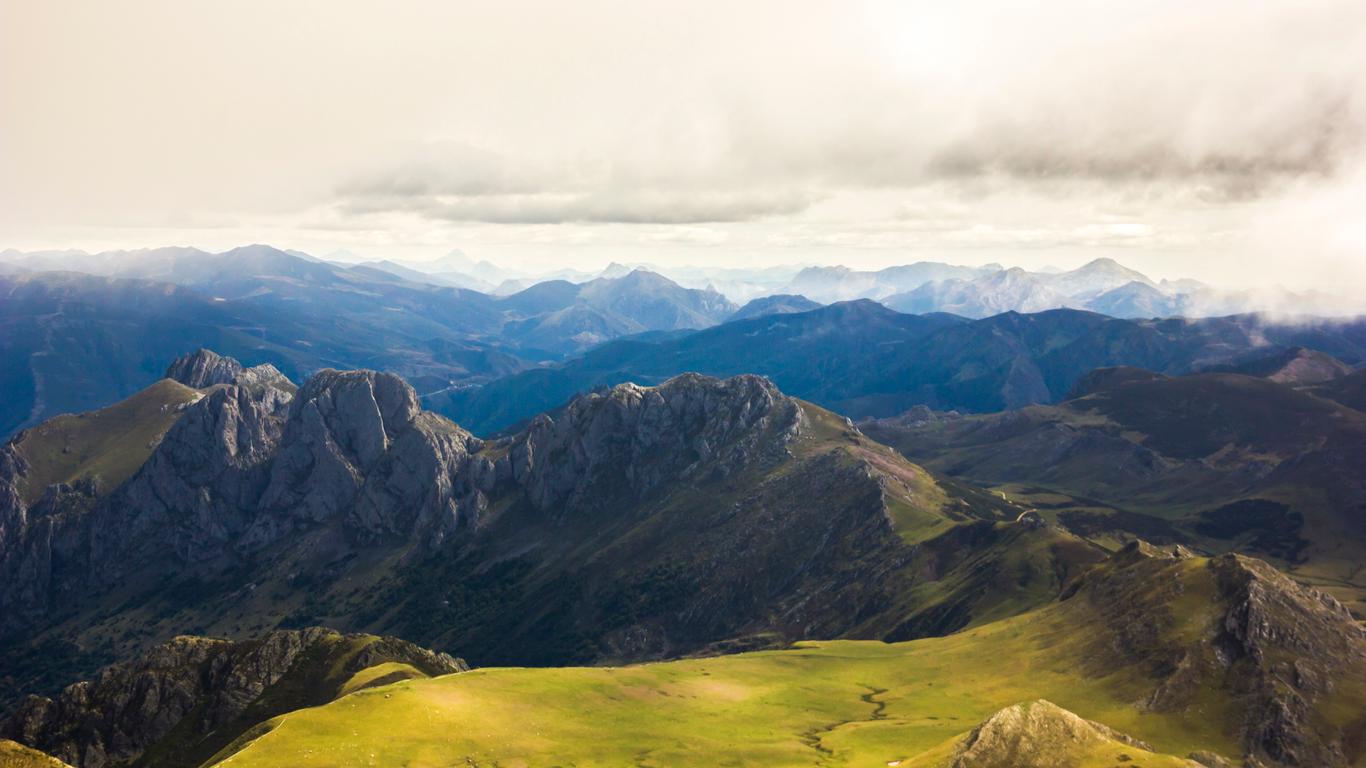Nestled between the Cantabrian Mountains and the Bay of Biscay, Cantabria is a historic community that centres around the seaside capital, Santander. It’s renowned for its subterranean caves adorned in Paleolithic paintings, as well as being home to a family-friendly nature reserve for endangered wildlife.
Things to do in Cantabria
Admire the Paleolithic paintings and charcoal drawings inside the Cave of Altamira, a UNESCO World Heritage Site near the historic town of Santillana del Mar. Believed to have been created around 35,500 years ago, the delicate originals have been meticulously recreated in the cave’s adjacent museum.
Don’t miss visiting El Soplao, a cave housing majestic stalactites and curtains of calcite hanging from the ceiling. Jump aboard the recreated mining train that accesses the cave platforms, then follow your guide through the impressive passageways of “The Ghosts” and “The Opera”.
Travelling with kids? Visit Cabárceno Park, a sprawling nature reserve occupying a former iron mine site in the picturesque Pisueña Valley. Get up close to Eurasian lynx, Somali wild ass and ostriches in their naturally-designed enclosures or follow one of the botanical paths beneath shady cedar, oaks and walnut trees.
Explore the seaside city of Santander, which clusters around a historic centre and the opulent Magdalena Palace. Stroll along the sands of Sardinero Beach to the picturesque Jardines de Piquio, then continue to the Maritime Museum of Cantabria to admire whale skeletons and exhibits exploring man’s relationship with the sea.
Getting around Cantabria
Seve Ballesteros-Santander Airport is the main gateway to Cantabria, while Bilbao Airport is around one hour’s drive east. Buses connect towns and villages across the region, but having your own vehicle is the most convenient way of getting around.





